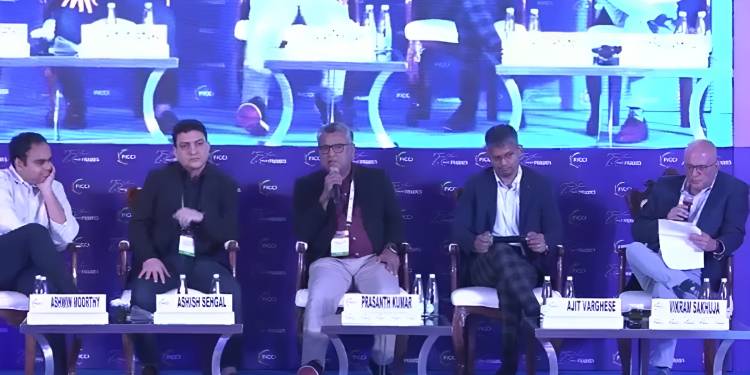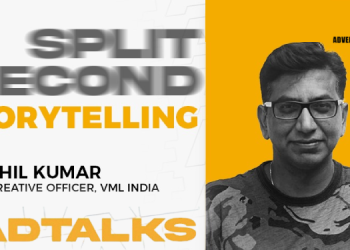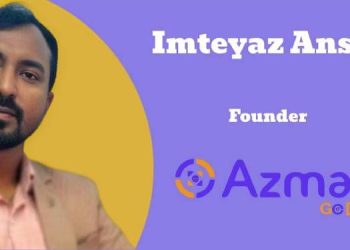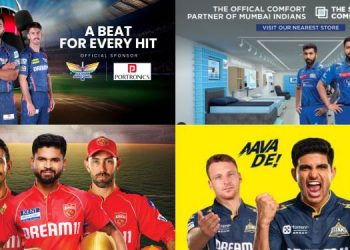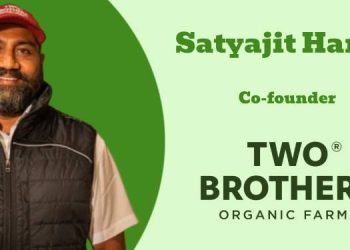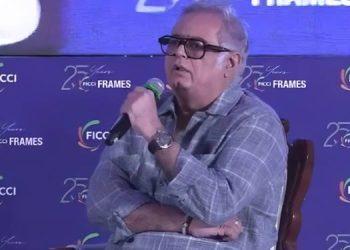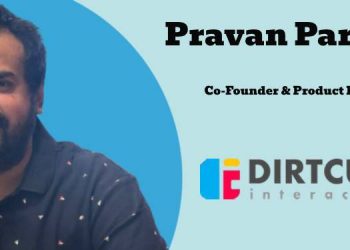MUMBAI: The reality today is that advertisers and their agencies have got a number of platforms available to them. Each has its own strength. The brand, depending on what its business is, how big it is, how small it is, how targetted it is, what is the kind of communication they need to do, they just need to drill down pretty closely into what each platform has to offer.
All platforms have certain things to offer. Definitely TV has got a lot. Curated content has a lot but it doesn’t mean that the other UGC also doesn’t. So, choose wisely. Choose partners and the entire decision-making. Just don’t make it a cookie-cutter approach. And, yes, it’s a nuanced world. Let’s treat it that way.
One session at the 25th anniversary of Ficci Frames explored how brands can harness the power of storytelling and develop innovative strategies to amplify their impact on TV and OTT. The speakers were Ajit Varghese – Head of Revenue, Entertainment & International, JioStar, Prasanth Kumar, CEO – South Asia, GroupM, Ashwin Moorthy, CMO Godrej Consumer Products Limited and Ashish Sehgal, Chief Growth Officer, Digital & Broadcast Revenue, Zee Entertainment Enterprise Ltd. The session was moderated by Vikram Sakhuja, Group CEO, Madison Media & OOH
Sakhuja started by noting that Historically, brands have been built using, of course, advertising and also stuff that is not advertising like using content assets be it associations, sponsorships, any kind of integrations, influencers, creator economy, all of that. Up till now, this has mostly been about brand building. The Storytelling, part of curated storytelling, is how the world has always been. It’s been the broadcasters coming out with some fantastic content, be it movies, entertainment, sports, news. Of course, now the new big revolution which is happening has been the user-generated content and all the stuff which is not curated by all the broadcasters. This panel he said aims to actually dive a little deep into this aspect and see what is the role of building brands through using curated as distinct from UGC.
He said that he wanted to touch upon three things. When it comes to advertising, where one places advertising, is that relevant at all? Number two is the entire aspect of advertising versus content. So when it’s coming to building brands using content, are the rules different from where they are during advertising? And thirdly he wanted to see where the money is going and see what it takes to impact that.
He asked Varghese if media is just a distribution pipe to place ads or is there something more? Does media give a little bit more than just a place where you place your ads? Varghese noted that the primary responsibility of media is about entertainment for consumers. People take a break from their daily jobs, from the daily things that they do to entertain themselves.
“And therefore, connected to entertainment is actually the power of storytelling. I think the art of storytelling whether it’s in the space of content, whether it’s in the space of brands or in the space of any new area of content development that we do. And I think that to me is key. From an advertiser’s point of view, when I start looking at, if consumers are congregating together for a particular platform, for a particular time and wanting to watch, entertain themselves advertisers look to sell their brands stories within that.
“The grey area is when we start making entertainment shopper marketing or entertainment only a marketplace.” The question then is if the companies are here to entertain customers? Are they here for the power of storytelling? Or is it another shopping network? “I think that’s the critical difference when we see what’s the primary job of media.”
Sakhuja asked Moorthy if in this entire quantity versus quality debate, whether he believes that it matters where he places his ads? Or as long as the audience sees it, that’s enough? Moorthy said that there is a sense of déjà vu as this question keeps coming up in panels. For him it is about the ad being seen. He said that there’s this contract that advertisers have with entertainers that the advertisers subsidise the ability of the entertainer to present their content to the world. Advertisers then use that space given to them to sell. And funnily, over probably a century, this has held true.
“And despite attempts to sort of convince ourselves that consumers don’t like watching advertising content. It spoils the entertainment itself. They try to avoid it. There are many more things out there. Generally there are exceptions where really good advertising delivered at scale does not work. They tend to be exceptions. The rule is generally speaking that if you use the time well, and you are creative and you sell well, you tend to get outcomes for the time and space you bought. There are exceptions where the content was done well, but there aren’t really many rules.
“So I would lean to say that it is, a pipeline and a quantity and how you use it is really important. And there’s an upside if you get the entertainment brand connection really well. You shouldn’t be closed with that.” Sakhuja asked Kumar if media agencies and their clients are missing a trick by not placing ads in a certain environment in the digital world and just saying, chase the consumer wherever he is?
Kumar noted that that frankly, the consumer behaviour is very critical here. Most of it is defined by the task of the brand. Everything from the quantity to quality perspective is about the task that one is trying to solve. It will follow from that context of where the investment, plan is going.
“Today we are in a very interesting phase where you have modern marketing, you have modern audiences, and you have modern behaviour. Why I say that is, I think many opportunities have come, (8:20) especially in the last 5-7 years, and we’re still learning and studying them. (8:25) I think a lot of brands and a lot of solutions are completely designed by the task that you have to solve.
“So I think TV has been a format where the main aspect of quantities, frequencies, is probably as Ashwin mentioned, we have a visability on that. (A lot of learning on digital is happening. I think this is a continuous learning on that. So I’ll stick to that perspective.”
Varghese noted that the IPL is not premium and costly. It’s actually below 60 CPM. “It’s below UGC content CPM that you all are buying at. So, I think it’s a misnomer. I think we need to dig deeper and understand how brands benefit from IPL. It’s much, much bigger than calling it premium content.
It’s actually the cheapest content in India.”
He noted that attention is the one area we should completely dig. Storytelling is about getting attention from storytellers. “We don’t have an attention problem from consumers. The whole problem of attention is in the social platforms or when we talk about minute content (12:44) or user-generated content. The professionally generated content publishers do not have an attention.
Think of a consumer. A consumer is coming back every day,) eight o’clock for the last five or seven years to watch Anupama. Do you think he or she has an attention problem? Do you think they have a loyalty problem? Every new show that we are bringing on television or on OTT, people come back next day, watch the same continuity of the show.
Moorthy was asked if he thinks marketers should ignore the attention point? He said that in marketing, there is a lot of science emerging on media which wasn’t present. Attention is one of them. Which is that, and it’s relevant because media is fragmented. And it’s very hard to compare CPMs like to like across multiple vehicles.
He agreed with Sehgal that screen size seems to be a determiner of attention being different. There does seem to be a range of attention in the same medium depending on consumer and context. “Attention, basically, is if you serve an ad in a particular space and time, what is the amount of seconds that you get on the piece of advertising?”
“And obviously, then it’s more valuable because when you pay for 10 seconds, you assume that you get 10 seconds But the consumer may not be viewing for 10 seconds. So, there’s some sort of skipping behaviour in all mediums.
“Some places you immediately know, some places you don’t. And so, attention gives you a quantum. You can’t ignore it today in principle.”
Sakhuja asked if a spot on Anupama is processed differently versus the spot placed on something at random is being viewed online. It could be social feeds, it could be general content platforms.
Sehgal said that Zeel just concluded a neurological study, where they did this matrix analysis, and amongst all the screen sizes etc., large screen which is LTV and CTV both, it fared 3x to 15x more than the content ads being monitored on the UGC or small screen content type. “Now, this is primarily because large screen has a much more attention. Secondly, the trust factor of the content which is there, and the involvement of a consumer within that content like ‘Anupama’ or ‘Bhabhi Ki Ghar Pe hai’. Now, from that perspective, they are watching that show for so many years, they have built a relationship.
“Now, that relationship passes on to the brand, which does not happen on social media. That relationship, and if you are building a relationship with the brand, that lasts you longer, and that’s where the brand building starts to happen.
So, when you are on a social media, you want to click something, you will click with somebody with whom you have a relationship, and not with somebody who is unknown.”
Kumar was asked if there are certain environments or mediums where consumers gives you permission to advertise, and equally are there others where they actually hate it if you advertise, and there’s not only active avoidance, but there’s also antipathy.
He agreed with that “As I said this space is evolving, and more and more studies will only help us to understand where this is going. There are spaces where consumers give you permission, and maybe to trade off versus the price they are paying to the platform. That’s how those ratios are getting built.
“But I think today, as Ashish mentioned, there are studies which are coming out, there are companies like Amplify. They are all studying some aspects specific to attention, specific to ambiences. But I want to also raise a point, you know, I think we should try and simplify this entire aspect.
“I think it is getting too complicated. You’ve got a reach to manage, you’ve got a frequency to manage, and you’ve got impressions to manage, and you’ve got, GRP, and you look at attention. I don’t know how you can split that one dollar in many such things? In my opinion, I think that quantity of reach and quality of reach are both important.
“And I think if we are doing campaigns after campaign, there is expertise and learning getting built on that. Things will evolve. There will be new practices which will come.
”I think there is authenticity of storytelling to the content, which can be compelling to manage the consumers to stay on. Great creativity allows the consumer to stay on. There is continuity on that, and there is accountability there of how you do creativity on that. In terms of the quantity of reach, it is important to reach more and more people. Visibility from a business perspective, that’s again a task. So, there is a continuum on this.”
Kumar explains that what he has learned in the industry is leverage. “Leverage what? Leverage good content, good attention, whether it is UGC as well. If there is a good UGC, for example, when people really go into blogs, you are really going in for something. And therefore, when a good creative advertising comes, I think there is good attention there and we can leverage that from that context.
“Similarly, if there is a UGC on a content like food or music or multiple things, I think it can be leveraged well. We are also spending a lot of time and creativity on creating great content. We first get the context for a content as well as fopr the brand to be applying on that on many invested content and platforms. It could be TV, it could be an OTT platform. So they are also equally critical. And if we are able to play a balance, because most of the time advertising is more looking into driving immediate results, whereas content is more about, you know, authenticity, storytelling.
“We have to create a balance of that. And leveraging each aspect is where the expertise comes in.”
Moorthy noted that there is clearly a role for what a brand is trying to achieve and his context is, for the long term salience built in a cost efficient manner at scale.
“There are different contexts. Some contexts are, some brands want to be part of cultural conversations. That’s the context. Some brands want to just be participative on online selling and commerce and media trials. And I think that context of what the brand wants to do does affect the media choices it makes. But between tangible measures that you have to take, quantity seems to be the one that most of us tend to gravitate towards as marketers.”
He said that there is a history of very strong rules on how it works and how it does well. “And I think the role for context is important in so far as it actually makes the quantity viable. It tends to be cost efficient to have a strong context that drive entertainment and eyeballs and then sort of lean into that quantity.
And it’s true that there is a range of attention differently between media which we learn that and it will indeed then qualitatively give us a good measure.Some of us include it, we already do it. There’s a difference.”
He explains that this is because similar advertisers, there are very different ratios of spending across media. It wasn’t the case in the past. (7:53) I think there are, some of it may be intuitive, some of it may be data that certain clients may have.
Sakhuja noted that clients get in a digital environment very good reach built up on YouTube. So there are many marketers who build reach at least the first frequency on YouTube and then they look at OTT to build a subsequent frequency. Is there another way of handling it? And say that if, for example, environment and all the rest of it is, is OK but at maybe (8:39) the same cost of 60 CPM right there, is there a different way in which advertisers can do without taking the massive reach of YouTube?
Varghese answered in the affirmative saying that the evolution of OTT, especially in the last five years it’s almost 10x, and the last two years it’s almost 2x in terms of consumer behaviour and the number of things that OTT has delivered. “Today, OTT is probably reaching half of consumers or 60% of consumers that are talking about on social platforms. At the end of the day, clients and marketers they want marketing effectiveness? They want messaging. Messaging to be delivered at the right content and it has to offer long term brand building.
“And I think when I look at, when you took a question of, when I go to a mass platform and then try to figure out micro-marketing or precision marketing versus when you look at an OTT platform today, it has automatically filtered out the H&I of India. It is a paid ecosystem, it is not a free ecosystem. Every mass person cannot watch OTT.
“Because when you watch OTT, you need to at least have half an hour to two and a half (9:52) hours of your time. And it is not a fast time where you will skip content, you will watch it five minutes, you will run away and then you come back and watch five minutes. When you watch OTT platforms, you are getting consumer attention, you are getting a premium consumer who is willing to pay or give time and you are getting specialised content.
“So, in a way, when I look at today’s planning, I would actually put OTT. Get your audience, but first on OTT. (10:20) Because when you watch OTT, you are almost getting a household, not just a consumer. And then cover up the reach across other platforms, whether you look at social platforms, whether you look at other large platforms. Because more or less, OTT platforms are giving you a metaphor of transacting audience. And eventually, the client wants a transacting audience because they want people to not only just remember brands, engage, but eventually go to the marketplace and buy.”
He said that Hotstar today has got 100 million paying consumers. And this two years back, it was less that one third. So, today, with the launch of Jio Hotstar, we have 100 million paying consumers. “Now, these are people who are paying to watch OTT. So, that allows us to filter the right household, the right audience, who are probably transacting audience of brands.”

